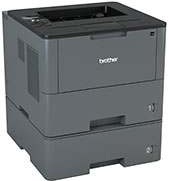
This printer model has new properties, but mainly, print technology is the modern laser method. In addition to this method, the printer also uses electrophotographic print technology that helps to maximize its capacity. The printer displays the status and receives a response through the touchscreen. This component contains a liquid crystal display (LCD) screen that is up to 1.8 inches. It also supports 16 different characters and one line of the display. The power source for the input into this printer model is between 110 to 120 volts of an AC and 50/60 Hz.
Brother HL-L6200DWT printer driver for Windows
| Filename | Size | Download |
| Drivers for Windows 7 8 8.1 10 vista 32 bit and 64 bit.EXE | 200.54 MB |
Brother HL-L6200DWT driver for Mac
| Filename | Size | Download |
| Drivers for Macintosh 10.14.dmg | 48.07 MB | |
| Drivers for Macintosh 10.13 and 10.12.dmg | 48.42 MB | |
| Drivers for Macintosh 10.8 to 10.11.dmg | 25.37 MB |
Specifications
The Brother HL-L6200DWT printer boasts a standard input capacity of approximately 256 MB of RAM, which collaborates with the internal processor. This printer’s peak performance can be achieved at the expense of up to 1368 watts. During printing or copying tasks, the printer consumes up to 670 watts of energy at a temperature of 250C. In quiet mode, the printer only utilizes 375 watts for printing and copying. At the ready state, the Brother HL-L6200DWT printer consumes approximately 32 watts at the same temperature.
Moreover, the sleep and deep sleep modes of this printer require 6.7 watts and 1.3 watts, respectively.
This printer boasts dimensions of 388 mm in width, 373 mm in depth, and approximately 419 watts in height. Its weight stands at approximately 35 lbs, or 15.9 kg. During printing, the sound pressure emitted is recorded at 54 dB (A), with a low of 50 dB (A). The printer’s active mode registers at roughly 35 dB (A), while the sound power emission measures a mere 4.8 B (A).
For optimal performance, operations should be carried out in a temperature range of 10 to 320C, with storage maintained between 0 to 400C. The ideal humidity range for activities is between 20 and 80% without condensation. However, for storage, the recommended humidity is between 35 and 85% without condensation.
